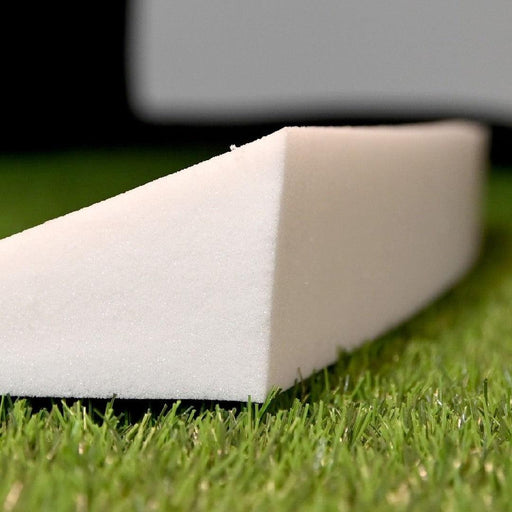
How Golf Simulators Help Preserve the Environment
In recent years, there has been a growing emphasis on sustainability and environmental conservation across various industries. While golf is often associated with lush green landscapes and manicured fairways, the environmental impact of traditional golf courses cannot be overlooked. However, with the rise of golf simulators, there is a new opportunity to enjoy the sport while minimizing its ecological footprint. In this article, we'll explore how golf simulators contribute to environmental preservation and sustainability.
1. Conservation of Natural Resources:
Traditional golf courses require vast amounts of water, fertilizers, and pesticides to maintain their pristine appearance. According to the United States Golf Association (USGA), the average golf course uses around 312,000 gallons of water per day. Additionally, the chemicals used to treat turf can leach into the soil and waterways, posing a threat to local ecosystems.
Golf simulators offer a sustainable alternative by eliminating the need for water-intensive maintenance practices and chemical treatments. With a virtual golfing experience, there is no requirement for watering, mowing, or applying harmful chemicals. By reducing the demand for natural resources, golf simulators help conserve water and protect fragile ecosystems.
2. Reduction of Carbon Emissions:
The transportation of golfers and maintenance equipment to and from traditional golf courses contributes to greenhouse gas emissions and air pollution. According to a study published in the Journal of Sustainable Tourism, golf-related activities account for a significant portion of carbon emissions associated with the sport.
Golf simulators offer a more eco-friendly option by allowing golfers to play from the comfort of their own homes or local facilities. By eliminating the need for long-distance travel, golf simulators help reduce carbon emissions and alleviate traffic congestion. Additionally, the energy consumption of golf simulators is relatively low compared to the energy required to maintain traditional golf courses.
3. Preservation of Wildlife Habitat:
Traditional golf courses often encroach on natural habitats, displacing native flora and fauna. The clearing of land for fairways and the installation of irrigation systems can disrupt ecosystems and fragment wildlife habitats. Furthermore, the use of pesticides and fertilizers can harm insects, birds, and other wildlife species.
Golf simulators help mitigate these environmental impacts by minimizing the need for land development and habitat destruction. With a virtual golfing experience, there is no disruption to natural ecosystems, allowing wildlife to thrive undisturbed. By preserving natural habitats, golf simulators contribute to biodiversity conservation and the protection of endangered species.
4. Water Conservation:
Water scarcity is a pressing environmental issue in many regions around the world, exacerbated by factors such as climate change and population growth. Traditional golf courses are notorious for their high water consumption, with irrigation systems often drawing from local water sources.
Golf simulators offer a water-efficient alternative by eliminating the need for irrigation altogether. With a virtual golfing experience, there is no requirement for watering turf or maintaining water features such as ponds and lakes. By reducing water consumption, golf simulators help alleviate pressure on freshwater resources and promote water conservation efforts.
Green Golfing:
In conclusion, golf simulators play a vital role in promoting environmental preservation and sustainability within the golfing industry. By minimizing the use of natural resources, reducing carbon emissions, preserving wildlife habitat, and conserving water, golf simulators offer a greener alternative to traditional golf courses. As awareness of environmental issues continues to grow, golf simulators represent a positive step towards a more sustainable future for the sport of golf.
Featured collection
-
Eagle Golf Mat
Original price $370.00 - Original price $1,130.00Original price $370.00$370.00$370.00 - $1,130.00Current price $370.00Introducing the Eagle Golf Mat: The Ultimate Golf Experience Are you passionate about golf and demand nothing but the very best in your practice eq...
View full details -
SkyTrak Launch Monitor
Original price $1,995.00 - Original price $2,144.95Original price$1,995.00 - $2,144.95$1,995.00 - $2,144.95Current price $1,995.00SkyTrak Launch Monitor The first personal launch monitor of its kind, SkyTrak is a realistic and real-time golf practice and play system. Keep yo...
View full details -
Paramount Universal Projector Mount in Black - PPF
Original price $189.00 - Original price $189.00Original price$189.00$189.00 - $189.00Current price $189.00Introducing the Paramount Universal Projector Mount in Black - PPF Create a sleek and sophisticated home theater or presentation space with the Par...
View full details -
Majestic Bay Protective Foam Padding
Original price $349.00 - Original price $399.00Original price$349.00 - $399.00$349.00 - $399.00Current price $349.00Majestic Bay Protective Foam Padding is designed with memory foam so that errant shots will not contact the frame. This adds protection both to th...
View full details -
Tour V6 Shift
Original price $399.99 - Original price $399.99Original price$399.99$399.99 - $399.99Current price $399.99Utilizing new and improved electronics, along with our patented, Tour-trusted Slope technology, Tour V6 Shift is the most accurate, consistent and ...
View full details





